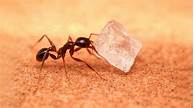How to Keep a Frog as a Pet
Frogs are fascinating and relatively low-maintenance pets that can bring joy to any household. Whether you're a first-time pet owner or an experienced herpetologist, following the proper care and housing requirements is essential for keeping your frog happy and healthy.

Choosing the Right Frog Species
1. Research Different Frog Species:
- Learn about the different species of frogs available as pets, their temperaments, size, and specific care needs.
- Consider factors like your experience level, available space, and budget when making your choice.
2. Compatibility and Temperament:
- Choose a frog species known for its calm and docile temperament, especially if you're a beginner.
- Some frogs may be more aggressive or territorial, so research their compatibility with other frogs or tank mates.
Setting Up the Frog's Enclosure
1. Appropriate Size and Type:
- Choose an enclosure that provides enough space for your frog to move around comfortably.
- Select an appropriate enclosure type based on the frog's species and size, such as a terrarium, aquarium, or plastic container with a secure lid.
2. Substrate and Drainage:
- Use a suitable substrate that mimics the natural habitat of your frog, such as coconut fiber, peat moss, or a combination of both.
- Ensure proper drainage to prevent waterlogging, which can lead to health issues.
3. Temperature and Humidity:
- Maintain the appropriate temperature and humidity levels for your frog's species using a thermostat and hygrometer.
- Provide hiding places, such as caves, rocks, or plants, to help regulate temperature and humidity.
Feeding and Nutrition
1. Appropriate Diet:
- Research the specific dietary needs of your frog species, as some frogs eat live prey while others prefer prepared diets.
- Offer a variety of insects, worms, or prepared frog food to ensure a balanced diet.
2. Feeding Schedule:
- Establish a regular feeding schedule that suits your frog's species and age.
- Avoid overfeeding, as this can lead to obesity and health problems.
3. Water Quality:
- Provide fresh, clean water in a shallow dish or bowl that allows your frog to soak and drink.
- Change the water regularly to prevent contamination and bacterial growth.
Health and Hygiene
1. Regular Checkups:
- Take your frog for regular checkups with a veterinarian specializing in exotic pets.
- This will help identify any health issues early on and ensure proper treatment.
2. Quarantine New Frogs:
- When introducing a new frog to your enclosure, quarantine it for a period of time to prevent the spread of any diseases or parasites.
- Keep the new frog in a separate enclosure and monitor its health closely.
3. Cleanliness and Hygiene:
- Regularly clean your frog's enclosure, including the substrate, water dish, and decorations.
- Remove any uneaten food or waste to maintain a clean and hygienic environment.
Declaration: All article resources on this website, unless otherwise specified or labeled, are collected from online resources. If the content on this website infringes on the legitimate rights and interests of the original author, you can contact this website to delete it.





